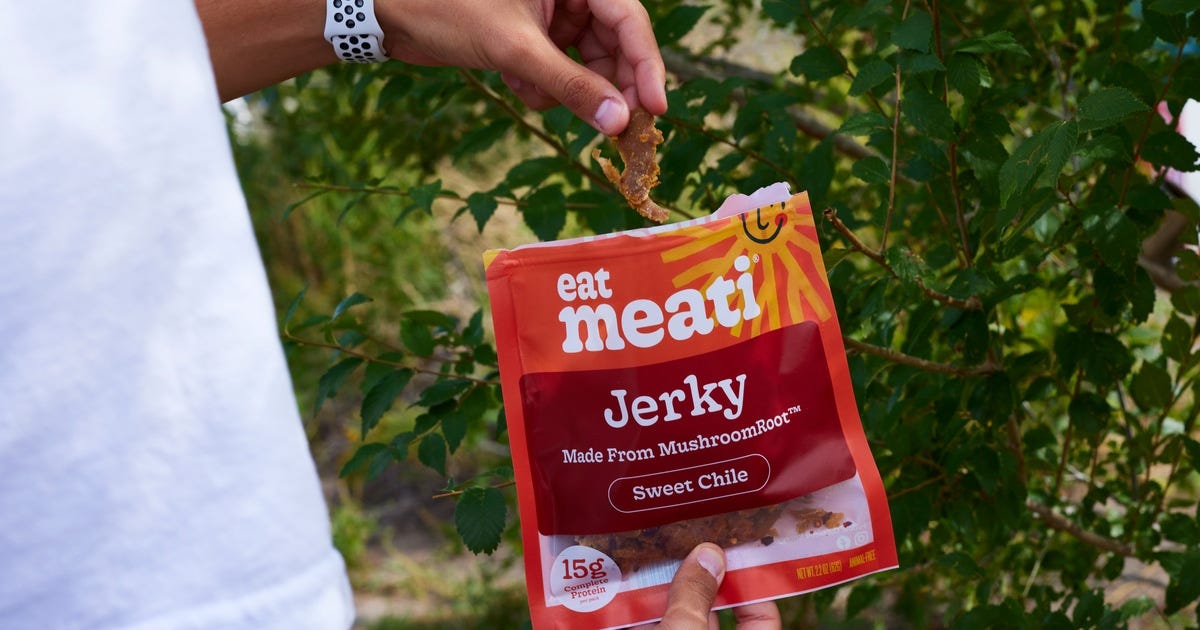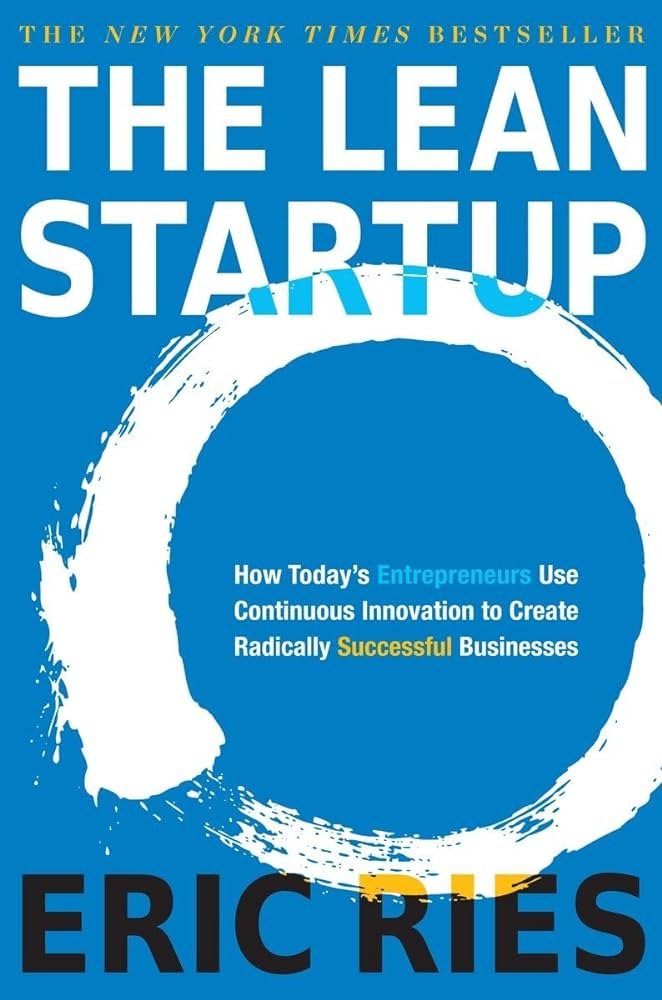8 Food Tech Trends, Mushroom Quiche & The Lean Startup
My food predictions for 2024, your new weekday go-to, and how to validate your next start-up idea (#50).
Welcome back to BRB w/ Nathan P, your 5-min weekly dose of information to inspire climate action.
Each Wednesday, you can expect💥1 Breakthrough, 🥘1 Recipe, and 📚1 Book on food & climate in your inbox.
We’re celebrating the 50th edition of BRB w/ Nathan P this week!
Thank you for your continued support – it means more to me than you can know.
💥 8 Food Tech Trends
We’re at an inflection point in plant-based foods and alternative proteins.
First-movers are shifting strategies, novel products are gaining traction, and new technologies like cultivated meat are seeing the light of day.
With changing funding environments and consumer expectations, industry pioneers like Beyond Meat are also struggling.
Is alt protein doomed? Far from it. 2024 has a lot in store and here are my 8 predictions:
1. 🌱 Clean labels & minimal processing
One of the main reasons I hear for avoiding plant-based foods is that they are highly processed.
People mention media articles, call out long nutrition labels, and avoid indigestible ingredients like “methylcellulose.”
These concerns are valid, though processing levels vary and meat giants shape some of the messaging.
Either way, as health remains top of mind entering the new year, I am expecting natural, clean, and minimally processed foods to win in 2024.
Despite what individuals may say, I suspect purchase decisions to be driven by health claims rather than sustainable ones.
2. 🥛 Broader alt dairy offerings
The growth of plant-based milks is a hallmark of CPG case studies.
Plant-based milk jumped from 5% to 15% US market share in 2022 (GFI) over the span of a decade.
Here are the leading plant-based options by continent:
🌎 North America: almond milk
🌍 Europe: oat milk
🌏 Asia: soy milk
Alternative dairy formats will expand, particularly in milk, cheese, yogurt, and butter.
The supply of new ingredients – from plant-based options like barley to animal-free casein from precision fermentation – will enable new functionality and taste profiles.
Protein content will also be king.
3. 🍄 Mushrooms are having a moment
The mushroom trend continues.
Organic and speciality mushrooms like oyster mushrooms, shiitake, maitake, and lion’s mane are seeing the fastest growth and now account for 11% of mushroom sales (USDA).
Mushroom-based coffees, powders, and analogues are also gaining momentum into 2024 with ~10% CAGRs.
Conversations and searches for mushroom products continue to increase. Here is the Google Trends data for brain-boosting “lion’s mane” from the past 5 years:
4. 🍔 More hybrids in food service
Meat consumption has a high environmental impact, but 95% of Americans are non-vegetarian and 42% are reluctant to give up meat.
Hybrid products offer tasty alternatives for the majority of the population to cut their meat consumption by 50%.
Early research shows promise:
42% of people are ANTI-giving up meat, and they have higher expected liking and purchase intention for 50/50 hybrid product than 100% plant-based products (Tarrega et al., 2020).
56% of plant-based consumers would also be interested in buying blended options (Hartman Group, 2019)
Yale Dining has been serving burgers with a 60:40 beef:mushroom blend for a decade. Although they are labeled as “blended burgers,” most students who don’t ask don’t notice.
Mush Foods is expanding its line of 50CUT mycelium blends for meat and seafood in food service in the US, which can both reduce costs and offer operational efficiencies for restauranteurs.
5. 🥚 Alt protein companies going B2B
Many food tech ingredient start-ups dream of vertical integration to sell their own brand of CPG products.
But this ignores ingredient industry “gatekeepers” like IFF, Kerry, and Ingredion.
PerfectDay, the California-based start-up pioneering precision fermentation of dairy proteins, learned this the hard way after raising $800M.
They sold the Urgent Company – their D2C arm with 5 brands – for a meager $1.25M last August.
Alongside news of PerfectDay’s $90M Series E last week, the company announced the founders are stepping down and new leadership is coming in. A strategy shift is underway.
D2C can have initial advantages, especially build customer relationships and get product feedback. But scaling with high marketing and distribution costs is no easy feat.

6. 💪 Focus on functionality and unit economics
Alternative protein ingredients – like egg and dairy proteins made from precision fermentation – will not outcompete current alternatives on ethics or sustainability alone.
Large corporations are making public commitments towards more responsible ingredients:
The Bel Group – cheese giant behind Laughing Cow®, Boursin®, and Babybel® – is transitioning to a 50% plant-based portfolio.
General Mills is committed to 100% cage-free eggs by 2025, which can be satisfied by using plant-based or animal-free egg replacers.
However, these remain public companies obsessed with the bottom line.
Alternative products will need to offer superior functionality, lower costs, and/or operational efficiencies to compete with the status quo.
7. 🍪 Shelf-stable offerings
Grocery stores are demanding higher shelf-life for novel foods with more product risk.
Cold chains still have high storage and transportation costs.
I expect to see more shelf-stable plant- and mushroom-based options in 2024, like Meati’s mushroom jerky.
8. 🦠 Feed the microbiome
In the post-COVID era, consumers are increasingly aware that gut health also impacts mood, energy, and immunity.
Today around 25% of Americans experience gastrointestinal (GI) tract diseases that impact daily life (AGA).
Digestibility and gut-health will be two key decision factors for consumers in 2024. Pay attention to pre-biotic fiber, protein digestibility (DIAAS), and bioactive peptides.
Fermented foods will support this trend with both a gut health and natural food messaging.
What else would you add? Let me know in the comments.
🥘 Recipe: Mushroom Quiche
The more I’m learning about our food system and animal agriculture, the harder it is to eat meat in good conscience.
95% of the 60 million pigs in the US are confined in metal buildings where they eat, sleep, and relieve themselves in an area no bigger than a bathtub.
These are highly emotionally intelligent animals who, like humans, experience severe depression and mental distress.
Thankfully, mushrooms enable bacon replacements that are just as delicious and crave-worthy 🥓
Here is my ‘shroom spin on quiche lorraine. It’s made with sautéed cremini mushrooms instead of traditional “lardon,” pancetta’s French cousin.
I am committed to reducing my meat consumption by two-thirds this year and am turning to mushrooms for alternatives. If you’re considering reducing meat consumption, my weekly recipes are here to help.
Note: what is the difference between mushroom and mycelium? The mushroom is the fruiting body and mycelium is the roots. Using the analogy of an apple tree, the mushroom is the apple and mycelium is the roots. Both are nutritious.
PS: if you make it, please send pictures!
📚 Book: The Lean Startup
New Year, new start-up?
If you have an idea you want to validate with minimal costs, this book is a great place to start.
The Lean Startup by Eric Ries provides the frameworks you need to develop a Minimum Viable Product (MVP) and iterate through Build-Measure-Learn feedback cycles.
He stresses something we don’t talk about enough in the start-up world:
The most important in building a start-up is not IP, fundraising, or media coverage.
It’s identifying a problem your customers have and validating the desirability of your solution.
I hope you enjoy this book if you pick it up. But do keep in mind: “Reading is good, action is better.”
My favorite quotes as food for thought:
“The big question of our time is not ‘Can it be built?’ but ‘Should it be built?’ “
“Success is not delivering a feature; success is learning how to solve the customer’s problem.”
“What if we found ourselves building something that nobody wanted? In that case, what did it matter if we did it on time and on budget?”
Thank you for reading – BRB next week ✌️
About Me
Hi there! My name is Nathan Paumier – I’m a climate optimist, food enthusiast, and avid reader.
My mission is to make it fun, easy, and delicious to make more sustainable decisions.
I started this newsletter after frequent questions on food tech, reading recommendations, and my secret recipes.
Want to get in touch or chat further? Anything you’d like to hear more of?
Forwarded this email?
Subscribe below to receive an email from me every week.
No spam, just quality ingredients.









